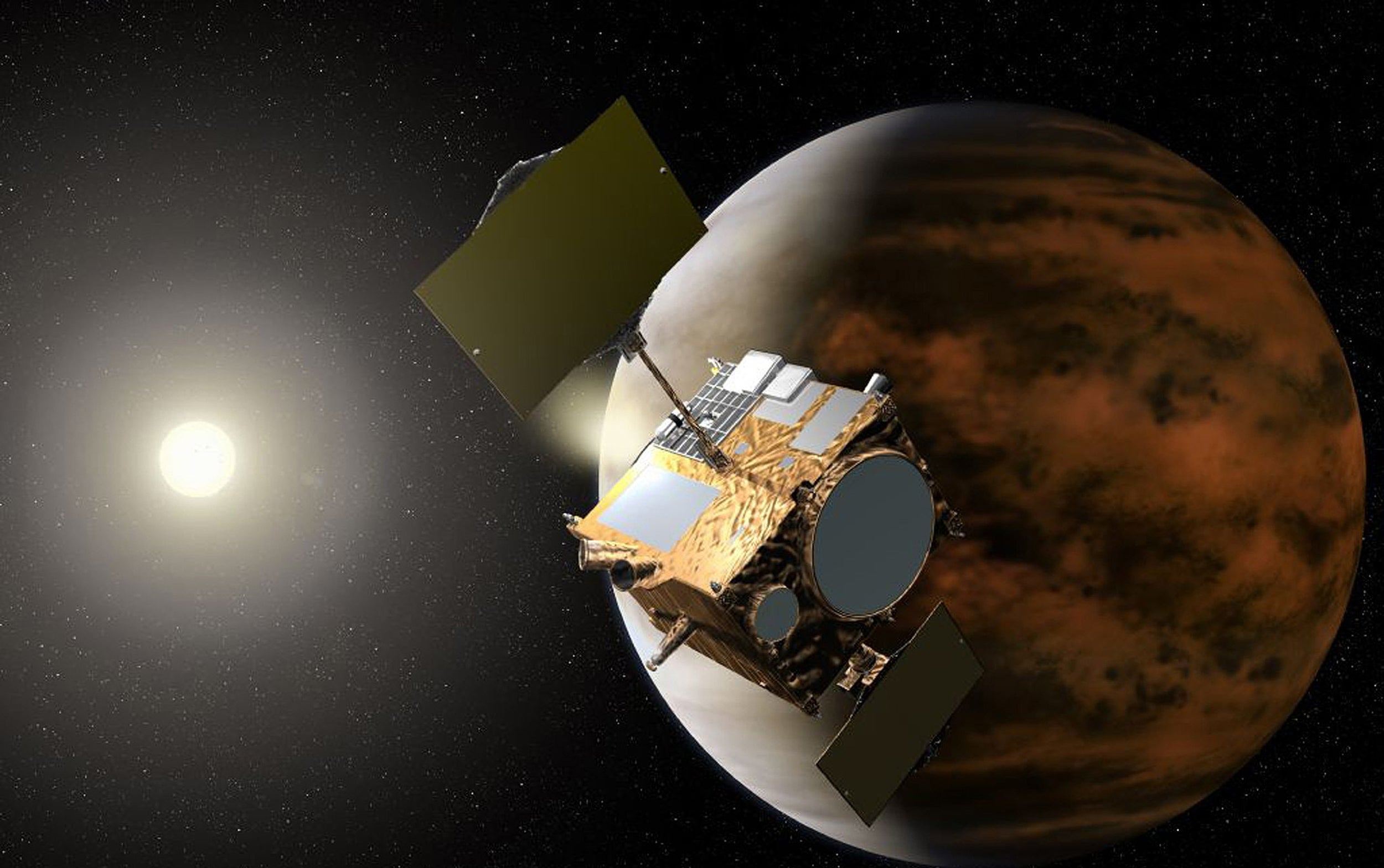Japanese Akatsuki space probe finally enters orbit around Venus, five years after first failed attempt
The probe entered orbit almost five years to the day after its first failed attempt

Your support helps us to tell the story
From reproductive rights to climate change to Big Tech, The Independent is on the ground when the story is developing. Whether it's investigating the financials of Elon Musk's pro-Trump PAC or producing our latest documentary, 'The A Word', which shines a light on the American women fighting for reproductive rights, we know how important it is to parse out the facts from the messaging.
At such a critical moment in US history, we need reporters on the ground. Your donation allows us to keep sending journalists to speak to both sides of the story.
The Independent is trusted by Americans across the entire political spectrum. And unlike many other quality news outlets, we choose not to lock Americans out of our reporting and analysis with paywalls. We believe quality journalism should be available to everyone, paid for by those who can afford it.
Your support makes all the difference.On its second attempt, the Japanese Akatsuki space probe has successfully entered orbit around Venus, more than five years after its May 2010 launch.
The unmanned probe's first attempt at getting into orbit was almost exactly five years ago, on 6 December 2010.
An engine malfunction meant the probe's boosters did not fire for long enough. The Japanese Aerospace Exploration Agency (JAXA) lost contact with it briefly, leaving it to orbit round the sun.
It took years for the probe to get close enough to Venus for it to attempt orbit again, but this time, it worked.
The Akatsuki successfully fired its engines for 20 minutes, slowing it down enough to enter an orbit around Venus, the second planet from the Sun.
Now it has reached its target, the probe, which is 25 million miles from Earth, will spend two days figuring out its orbit before it begins its observations.
Fitted with three infrared cameras, one ultraviolet imager, two lighting cameras and one radio experiment, the probe will study the atmosphere and cloud structure of Venus, potentially revealing lighting and volcanic activity on the planet's surface.
Join our commenting forum
Join thought-provoking conversations, follow other Independent readers and see their replies
Comments